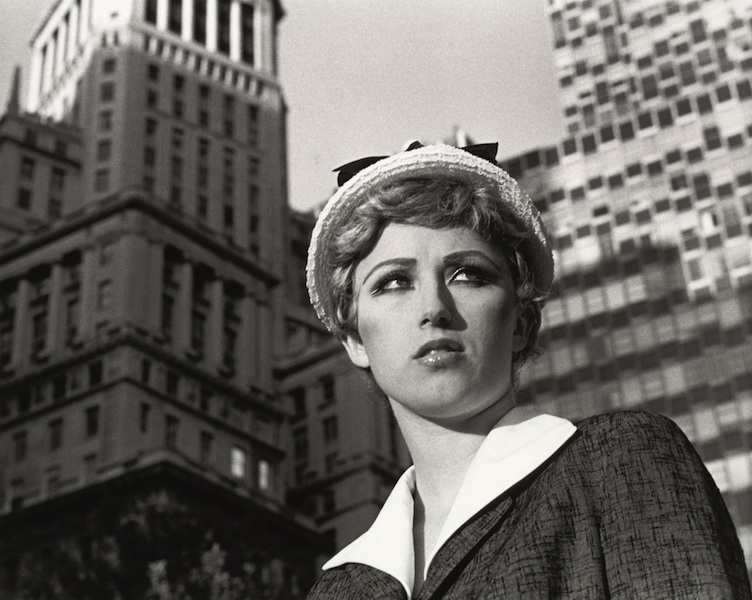
Cindy Sherman, Untitled Film Still #21, 1978
Anyone familiar with the development of art in recent decades, and art’s relationship to photography, will know Cindy Sherman’s series of Untitled Film Stills, and #21 (1978) is probably the most famous. I was reminded of the image while reading How to See the World by Nicholas Mirzoeff, a leading figure in the study of visual culture, who devotes a page to discussing it. The picture occupies a similarly emblematic position in a section on postmodernism in the newly published second edition of David Bate’s Photography: The Key Concepts.
Mirzoeff uses the image in a chapter devoted to the ways in which the self has been represented from the self-portrait to the selfie, and his interpretation of the image is precise and authoritative—so authoritative it made me pause to wonder whether I found the same things that Mirzoeff sees there. Then I became curious about how others have described what is happening in Sherman’s picture when it’s detached from the series of sixty-nine photographs.
A naïve reading is only possible if you know nothing about Sherman, and assume this to be a candid shot of a young woman in the street, perhaps taken in the 1950s. But the woman is Sherman herself, performing the role not of an ordinary pedestrian, but of an actress playing a part in an imaginary movie. The artist wants us to remember all the films we have watched in which such scenes occur.
Since the image is entirely constructed rather than being the product of chance, we are bound to pay close attention to what it includes and excludes, and above all to the woman’s ambiguous expression. For Mirzoeff, the direction of her gaze toward something we can’t see, and her slightly parted lips, create a “sense of threat and anxiety.” He notes that in classic Hollywood screen set-ups, “the victim is always isolated like this before being subjected to violence.” Yet Sherman’s expression could equally well signify nothing stronger than mild uncertainty. A catalogue published in 1991 even describes the set of her mouth as blasé, and as expressing “an urban attitude.” The MoMA collection merely characterizes her as a “pert young career girl” new to the city, while The Art Story site sees her as a small-town girl, who is “suspicious of the metropolitan lights and shadows.” For the Women’s Work Tumblr, though, she does look worried, and this, along with the towering buildings, creates an impression of her anxiety and stress.
So anxiety, perhaps, but “threat” feels like too much projection. Whatever her other motivations, Sherman clearly loved to dress up, to inhabit these fabricated alternative selves, and once you become aware of her as performer, this spirit of playfulness is also present in the image. Untitled Film Still #21 is one of her best early photographs, and the costume styling and architecture—even more “period” for viewers now than they were in 1978—are integral to its enduring appeal as a standalone picture.
See all Exposure columns

